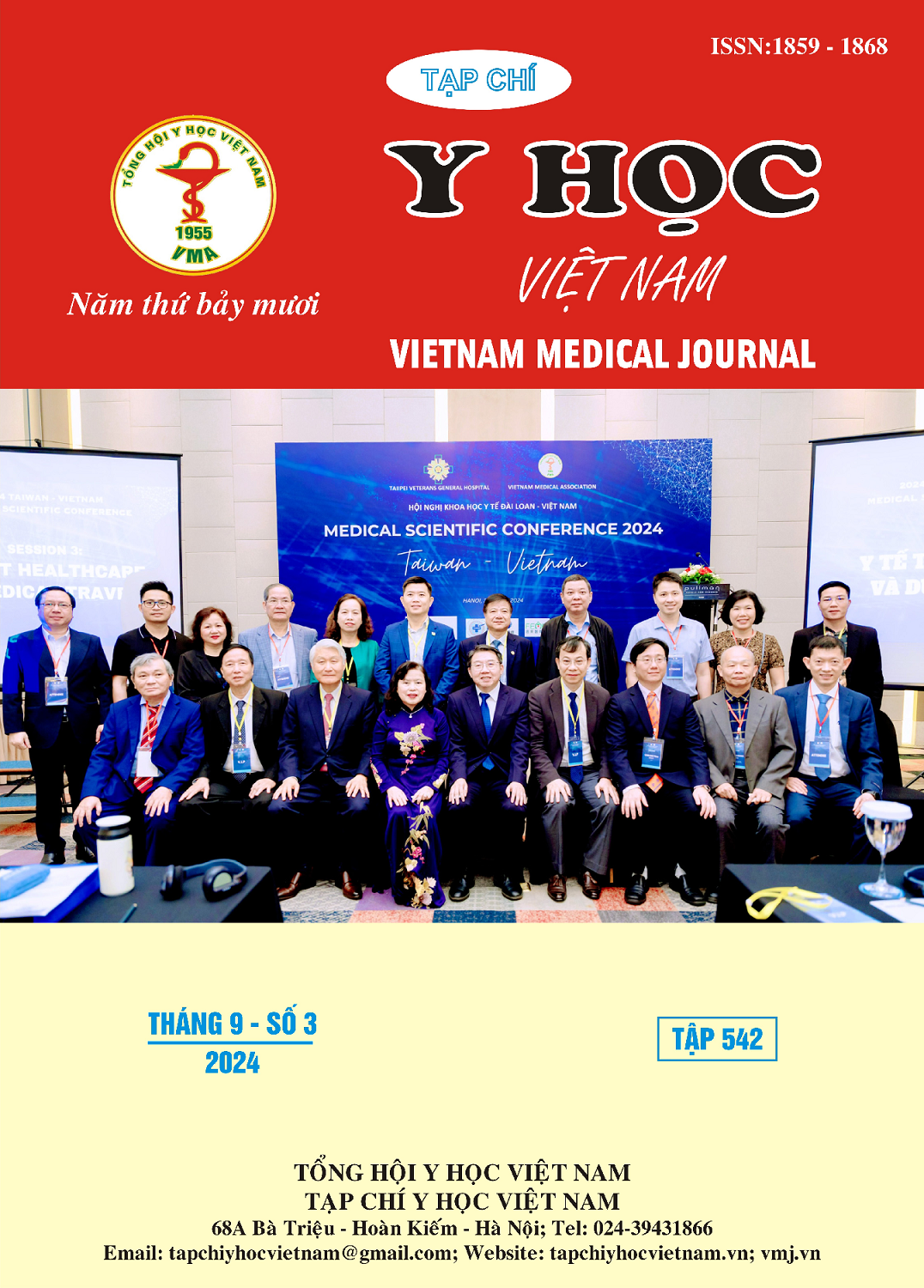SURVEY ON THE UNDERSTANDING OF EYEGLASSES AMONG PATIENTS WITH REFRACTIVE ERRORS EXAMINED IN NATIONAL INSTITUE OF OPHTHALMOLOGY
Main Article Content
Abstract
Objectives: To survey the understanding of the use of eyeglasses among patients with refractive errors who came for examination at the Department of Refractive Diseases of National Institue of Ophthalmology. Subjects and methods: A cross-sectional study. Patients diagnosed with refractive errors who came for examination at the Refractive Department of the National Institue of Ophthalmology from December 2023 to April 2024. Results: 318 patients participated, 59,4% female, 40,6% male; average age of 16,6 ± 7,7; 49,1% under 15 years old and 15 years or older (50,9%); 40,6% of patients lived in urban areas, 59,4% lived in rural areas, 83,0% were students; 74,8% had education level from high school or higher. 32,4% of patients had good understanding about using eyeglasses, 67,6% had poor understanding. Patients fully understood the of types of refractive errors (79,2%) and known about some complications of refractive error were 63,8%. Among the treatment methods for refractive errors, wearing eyeglasses (75,5%). 96,9% of patients knew they had refractive error and 92,1% knew about eyeglasses, 60,1% knew that eyeglasses could treat refractive errors, 47,8% fully understood the benefits of using eyeglasses. Patients knew the address for prescriptions eyeglasses was an eye hospital or eye clinic (97,5%), The place, where glasses were installed was the hospital’s prescription eyewear store (57,9%). Patients understood the advantages of eyeglasses being cheaper than others methods at 92,1%. and the disadvantages when participating in outdoor activities (89,0%). Using glasses as prescribed by an ophthalmologist (91,2%) and glasses prescribed and cut according to the prescription of an eye specialist was 96,9%. The most common reasons for non-compliance with eyeglass wearing were inconvenience, discomfort, lack of confidence when wearing them (74,5%). 83,3% correctly recognized the follow-up time when using eyeglasses. Conclusion: 32,4% of patients have good knowledge about using glasses, 67,6% have poor knowledge. Patients still have an incomplete understanding of the complications of refractive errors, benefits, places to install glasses.
Article Details
Keywords
knowledge, eyeglasses, patients with refractive errors.
References
2. Alemayehu A.M., Belete G.T., và Adimassu N.F. (2018). Knowledge, attitude and associated factors among primary school teachers regarding refractive error in school children in Gondar city, Northwest Ethiopia. PLoS One, 13(2), e0191199.
3. Assefa N.L., Tegegn M.T., và Wolde S.Y. (2021). Knowledge and Attitude of Refractive Error Among Public High School Students in Gondar City. Clin Optom (Auckl), 13, 201–208.
4. Desalegn A., Tsegaw A., Shiferaw D. và cộng sự. (2016). Knowledge, attitude, practice and associated factors towards spectacles use among adults in Gondar town, northwest Ethiopia. BMC Ophthalmology, 16(1), 184.
5. Nyamai LA, Kanyata D, Njambi L và cộng sự. (2020). Knowledge, attitude and practice on refractive error among students attending public high schools in Nairobi County | The Journal of Ophthalmology of Eastern, Central and Southern Africa. The Journal of Ophthalmology of Eastern, Central and Southern Africa, 20(1).
6. Ogbu N., Arinze O., Okoloagu N. và cộng sự. (2022). The knowledge of rural secondary school students on spectacle wear for correction of refractive errors: a south east Nigerian study. AOVS, 12(1), 23–28.
7. Phillips J., Anstice N., và Loertscher M. (2013). Myopia progression: can we control it?. Optometry in Practice, 14(33–44).
8. World Health Organization. Regional Office for South-East Asia (2009), VISION 2020, WHO Regional Office for South-East Asia.


